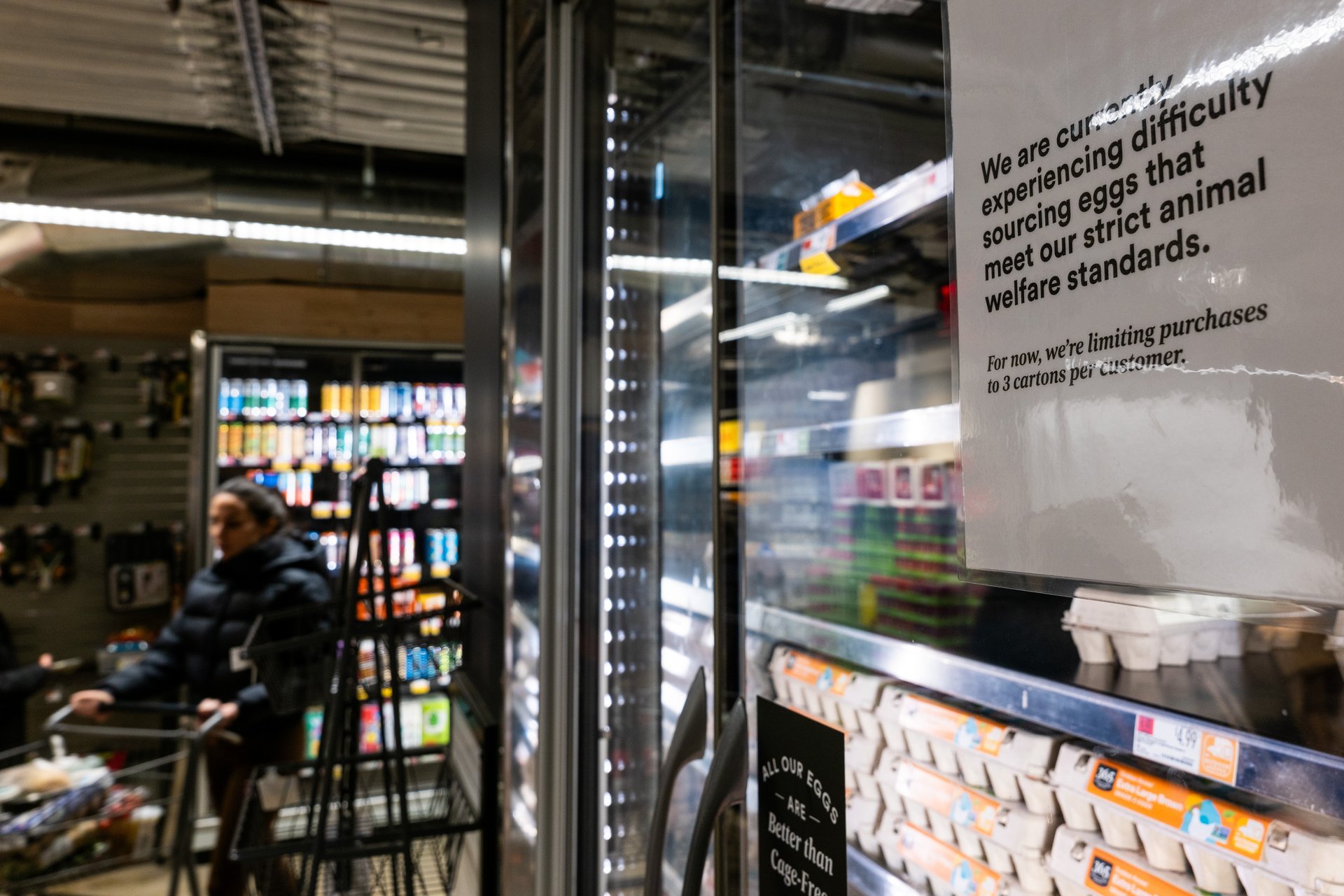Costco, Whole Foods, and Trader Joe's are limiting how many eggs customers can buy
The fast-spreading bird flu is causing egg prices to reach an all-time high — and now an egg shortage at grocery stores

A number of the nation’s top grocery store chains, including Costco (COST), Whole Foods (AMZN), and Trader Joe’s, are now limiting how many eggs customers can buy due to a shortage sparked by bird flu.
Suggested Reading
Trader Joe’s has issued a nationwide limit of one dozen eggs per customer, per day due to “ongoing issues with the supply of eggs.”
Related Content
“We hope these limits will help to ensure that as many of our customers who need eggs are able to purchase them when they visit Trader Joe’s,” a company spokesperson told Quartz in an emailed statement.
Several news outlets are reporting that other grocery stores are also implementing similar limits. Egg limits have been reported in Kroger (KR), Costco, and Whole Food locations across the country. The grocery store chains did not immediately respond to a request for comment from Quartz.
The new store policies also come as egg prices have hit a record high. This past week, average wholesale prices for large white-shell eggs reached an all-time high of $8 per dozen. That figure blew past the previous record of $5.46 in December 2022, CNBC reported citing data from agricultural commodity prices tracker Expana. The U.S. Department of Agriculture said in January that it projects that egg prices will continue to rise 20.3% in 2025.
How is the bird flu causing an egg shortage?
The primary reason for the egg shortage is a shrinking of the nation’s egg-laying hen population due to the ongoing bird flu outbreak.
H5N1 is a type of bird influenza virus that was first detected in 1996 in domestic water foul, such as ducks and geese, in Southern China. It is highly contagious among birds. A new outbreak of the virus was first detected in 2020 among wild birds in Europe. This outbreak eventually made its way to the U.S. in 2022.
Since then, over 136 million birds, including commercial poultry, have been infected, according to the U.S. Centers for Disease Control and Prevention (CDC). In just the past 30 days, nearly 12 million cases among U.S. birds were detected.
Whenever a flock is infected they are culled — a euphemism for killed — in order to stop the spread of the virus. A farm in New York recently made headlines after it was forced to euthanize 100,000 ducks after health officials confirmed the flock was infected with the bird flu.
The U.S. Department of Agriculture (USDA) reported this month that the country’s egg production fell 3% in December and the population of all egg-laying poultry fell 2% from last year.